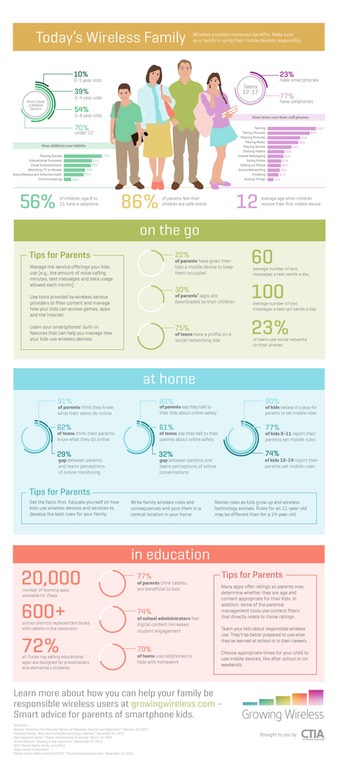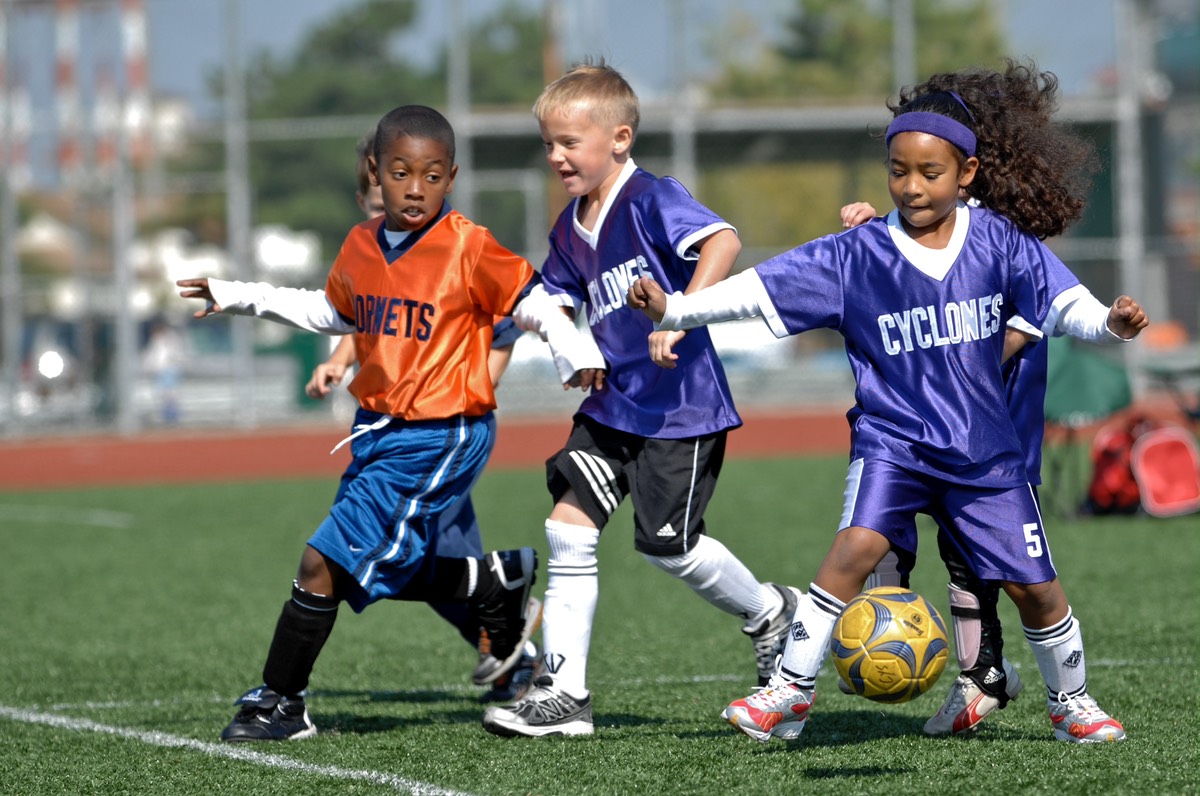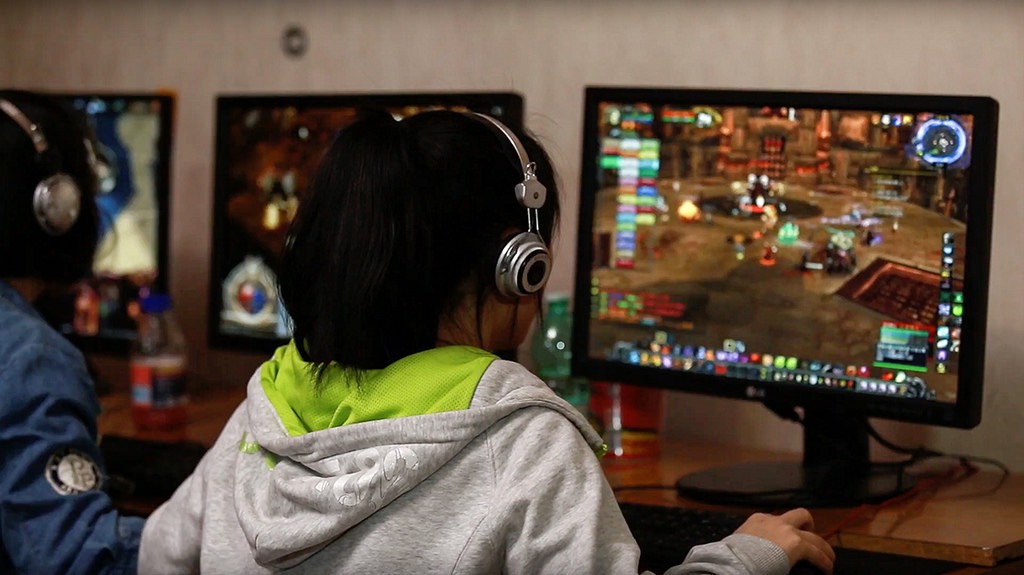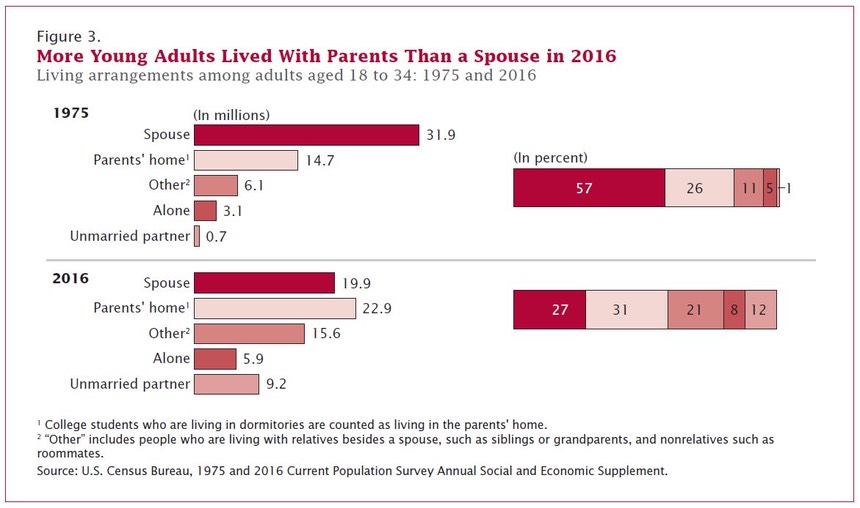Click here to download a free PDF copy of this blog
A QUESTION I ROUTINELY GET ASKED
“Are children more overindulged, spoiled and entitled today than when we were growing up?” Actually this question is not a new one for our time. It has been asked before.
For example, in the February 1922 edition of The Ladies Home Journal, Beatrice Barmby pended an article titled “What are We Doing With Our Children”. She writes:

Ladies Home Journal 1922
“Have we not, in our craze for giving the child self-expression,
for respecting its individuality, robbed it of the old valuable
tonic of discipline, made inclination paramount, duty obsolete?…
By our modern luxury of habit, by our overlavishness in supply,
we are in danger of robbing our children of the valuable quality
we children used to call “sand,” “grit,” and which my mother
called “backbone,” meaning a moral firmness, an ability to
endure discomfort and unhappiness…
As a natural result of our modern methods our children do not
expect consequences; they grow up instead with the firm
conviction that they have a right to do what they please…
Another consequence of overindulgence, less vital perhaps, but
nevertheless important, is that our children are growing up
without a sense of value.”
TELL US WHAT YOU THINK!!!!
It could be that children today are more overindulged than we were, but then again, doesn’t every generation look back on their own formative years through rosy glasses, and at the generation directly following them with critical eyes wide open?
Another way to think about the question, Are today's children more overindulged than children growing up in the past? is to look at the today’s numbers.
Read through the following facts and then you can decide for yourself.
OVERINDULGENCE TODAY BY THE NUMBERS
1. KIDS ARE MORE SPOILED
A recent Parenting Magazine/TODAY Moms poll of 6,000 parents found the following:
Compare how spoiled your kids are to how spoiled you were at their age. Are they:
More spoiled ……..59.0%
Less spoiled………10.8%
About the same…..30.2%
Do you think your kids are spoiled during the holidays?
Yes. Our gift-giving has gotten out of control……….19.9%
A little. We could definitely cut back…………………56.2%
No. We set limits and stick to them…………………..23.9%

Photo: Pexels
2. MOST BELIEVE MILLENNIALS ARE ENTITLED AND THEY AGREE
According to a 2014 Reason-Rupe national poll:
ü 65% of Americans say Millennials are entitled.
ü 58% of Millennials agree they are entitled.
ü 71% say Millennials are selfish.
ü 18-29 year-olds are much more likely to view their cohort as responsible (77%) and hard working (74%) compared to 49% of Americans over 30.
Related Story: Are Children Today More Overindulged than We Were? by David Bredehoft
3. MILLENNIALS THINK NEGATIVELY ABOUT THEIR GENERATION
A 2015 Pew Research Survey found that Millennials think of themselves in more negative terms compared to GenXers, Boomers and the Silent generation. Millennials see their generation overall as:
ü 59% Self-absorbed
ü 49% Wasteful
ü43% Greedy
ü 31% Cynical
4. PARENTS TODAY ARE MORE OVERPROTECTIVE
A 2015 Pew Research Center national survey found parents overprotective:
ü A majority of American parents (62%) say they can sometimes be overprotective, and this is particularly the case among mothers.
ü Nearly seven-in-ten (68%) moms describe themselves this way, compared with 54% of dads.
ü About one-in-five (19%) moms and a third of dads say they are the type of parent who sometimes gives too much freedom.
ü About two-thirds (68%) of Millennial parents say they can sometimes be overprotective, compared with 60% of Gen X and 54% of Boomer parents.
Flickr Photo by Glenn Beltz, Lisc. CC
5. MOST AMERICANS BELIEVE KIDS FACE MORE THREATS TODAY
According to a 2014 Reason-Rupe national poll:
ü 62% of Americans believe children today face more threats to their physical safety than previous generations.
ü More women (70%) than men (53%) say kids today face more danger.
ü 68% of Americans believe the law should require children 9-years-old and younger should be supervised while playing in public parks.
ü Most believe threats to children have increased EVEN THOUGH IN REALITY research suggests threats are actually on the decline.
6. MORE ADULT CHILDREN ARE LIVING AT HOME
There’s a failure to launch young adults and parents are providing financial support to their grown children.
ü According to a 2017 Gallup Poll 46% of investors who have one or more grown children are providing them with financial support and 61% of those who are providing the support say that it hurts their own retirement savings.
ü According to the Pew Research Center it is the first time in more than 130 years, Americans ages 18-34 are more likely to live with their parents than in any other living situation.
ü In the 18-34 age group, 32.1 percent of people live in their parents’ house.
ü Millennials are the generation most likely to live at home
ü It is becoming more common for adult children to live at home and for long stretches
ü Census: More Americans 18-to-34 Now Live With Parents Than With Spouse
Graphic from CNSNews.com
Related Story: Our Children Are Back Home Living With Us Again!!!!!! A Contract For Young Adults Living At Home is What You Need! by David Bredehoft
7. COMPANIES ARE SPENDING HUGE AMOUNTS ADVERTISING TO KIDS
According to the Campaign for a Commercial-Free Childhood, Companies spend an estimated $17billion dollars annually to advertise products to children.
ü Children under 14 spend about $40 billion annually. Compare this to the $6.1 billion
ü 4-12 year-olds spent in 1989. Teens spend about $159 billion.
ü Children under 12 influence $500 billion in purchases per year.
ü This generation of children is the most brand conscious ever. Teens between 13
and 17 have 145 conversations about brands per week, about twice as many as
adults.
8. MORE CHILDREN AND TEENS ARE OVERWEIGHT AND OBESE
Data from the National Health and Nutrition Examination Survey, 2016-2016 reveals that:
ü In 2015–2016, the prevalence of obesity was 39.8% in adults and 18.5% in youth (2-19 years).
ü The prevalence of obesity was higher among youth aged 6–11 years (18.4%) and adolescents aged 12–19 years (20.6%).
ü The overall prevalence of obesity was higher among non-Hispanic black (22%) and Hispanic youth (25.8%) than among non-Hispanic white (14.1%) youth.
ü The observed change in prevalence between 2013–2014 and 2015–2016 was not significant among both adults and youth.
9. MILLENNIALS SPEND $ ON COFFEE, CLOTHES & HOT RESTAURANTS
Data from a June 2017 national survey conducted by Charles Schwab titled “How American define and manage their wealth” found the following:
ü Only 33% of millennials make all my loan payments (e.g. mortgage, student loans) on-time each month compared to 43% of Gen-Xers and 50% of Boomers.
ü Millennials spend more freely than other generations on Ubers, $4 coffee, electronic gadgets, clothes, live music, and hot restaurants etc. (see chart below).
Graphic from Charles Schwab
10. PARENTING IS NOT THE SAME TODAY
ü According to a 2015 Pew Research Center study on parenting in America: percentage of parents today:
ü 25% feel they give their children too much freedom;
ü 62% say they are overprotective;
ü 43% say they “stick to their guns too much”;
ü 43% say they give in too quickly;
ü 44% feel they criticize their children too much;
ü 33% think that they praise their children too much.
11. AFFLUENT PARENTS AND KIDS FUEL CHILDREN’S WEAR MARKET
Affluent parents and fashion conscious children drive the global children’s wear market. Also, the “mini-me” trend, the demand for luxury children’s wear is on the upswing as the global market for Children’s Wear is forecast to reach $321.6 billion by 2014, driven by factors such as:
ü Growing exposure of children to media and the ensuing rise in materialism;
ü Excessive consumption and impulsive purchases;
ü Enhanced role of children in purchase decisions;
ü Growing affluence of parents;
ü And widening range of choices of luxury and designer clothing brands.
Graphic from Dolce & Gabbana
12. MORE KIDS HAVE SMART PHONES AND POST ON SOCIAL MEDIA
Data compiled by “Kids Wireless Use Facts” show the following:
ü On average, children are 12.1 when they receive their first mobile device.
ü 56 percent of children, age 8 to 12, have a cellphone.
ü 60 percent of families who have provided a cellphone to their child did so between the ages of 10 and 11. 20 percent provided their 8 to 9 year olds with a cellphone.
ü Among children 8 years of age and younger, 21 percent use smartphones.
ü 38 percent of children under 2 used a mobile device for media.
ü Dads are more likely to give kids smartphones in elementary school while moms are more likely to give kids smartphones in middle school.
ü 37 percent of teenagers, ages 13 to 17 have or have access to a smartphone.
ü 88 percent of teenagers, ages 13 to 17 have or have access to a cellphone.
ü 51 percent of high school students carry a smartphone with them to school every day, compared to 28 percent of middle school students.
ü 70 percent of parents of teens with a cellphone have reviewed their teen's text messages, while only 39 percent of teens believe their parents monitor their cellphone somewhat closely.
ü 53 percent of adolescents, ages 8 to 17, report they have been in the car with someone who is texting and driving.
ü 91 percent of teens go online from a mobile device, at least occasionally.
ü A typical teen sends and receives 30 texts per day.

Flickr Photo by Gary Knight, Lisc. CC

ü Click here to download a free INFOGRAPHIC titled “Today’s Wireless Family” from Growing Wireless
ü 89% of teens use social media.
ü Nearly half of teens say they have posted something online that they later regretted.
ü One in three teens say they feel more accepted online than they do in real life.
ü 8 percent of people in the U.S., ages 16 – 34, have been turned down for a job because of their social media profile.
ü 46 percent of parents have access to their children's social networking accounts.
ü 71 percent of teens use more than one social network site.
ü A typical teen Facebook user has 145 friends and an Instagram user has an average of 150 followers.
ü 51 percent of teens, ages 13 to 17, use social media sites daily.
ü 56 percent of teens say that photos of themselves, or “selfies,” receive the most likes compared to other posts.
13. KIDS TARGETED WITH THOUSANDS OF ADS DAILY
ü Children and adolescents are exposed to more than 40,000 ads per year on television. This does not count the number of ads on the internet, school, magazines etc.
ü 160 magazines are now targeted at children and adolescents.
ü Young people see on average 2000 beer and wine commercials annually and exposure to alcohol commercials are a significant risk factor.
ü In one recent survey of 18-34 year olds over half of the participants were exposed to marijuana advertising in the past month.

Flickr Photo by USAG-Humphreys: Lisc. CC
14. SPORTS, SCHOOL ACTIVITIES, & SUMMER CAMPS SPENDING
üAccording to a 2010 Retail Me Not study parents whose children play sports spent on average $641on sports clothes and gear.
üParents of football players spent the most while hockey parents spent the least.
ü21% of parents spent more than $1,000 per year per child on sports clothing and gear.
ü According to a 2017 Minneapolis StarTribune report youth sports are and estimated $15 billion dollar industry.
ü For example, some families spend a minimum of $7,500 per year per athlete for year-round softball training.
Related Story: Are you a Well-Intentioned, Over Involved Sports Parent? by Jean Illsley Clarke
üA 2017 Capitol One survey found that 37% of families (more than a third) say they plan to spend over $1,000 per child on school and after-school activity fees this academic year.
ü20% of families plan to spend more than $2,000 per child on after-school activity fees.
ü A New York City family earning $500,000 a year will spend $12,000 a year on children’s music and art lessons and sports.
ü According to Money Magazine, in 2016 the older your child is the more you will pay on average for extracurricular expenses. Parents of:
ü Elementary school kids average $463;
ü Middle-school average $629, and
ü High school parents average $1,124.
Back-To-School Spending
ü Back-to-school spending in 2017 is expected to be $83.6 billion.
ü $3.4 billion on back-to-school backpacks.
ü $8.8 billion on back-to-school electronics.
ü $4.9 billion on school supplies.
Summer Camps
ü In 2014, parents reported planning to spend an average of $958 per child on summer expenses.
ü Wealthy parents spend $20,000 on a 10-week summer camp at the International Riding Camp. Extras like 90 minute polo lessons cost $250 each.
ü A weeklong sleep-away camp costs an average of $768 according to a 2015 American Camp Association report.
ü 2015 camp prices for sleep-away camps range from $200 to more than $1500 per week.

Flickr Photo: Lisc. CC
15. GRANDPARENT SPENDING
Grandparents spend huge amounts of money every year on their grandchildren and in some cases they dip into their retirement savings to do so jeopardizing their own future.
ü Grandparents spend a combined $50 billion annually on their grandkids.
ü According to a 2017 TD Ameritrade survey grandparents report they spend an average of $2,337 each year to support their grandkids college savings. Further, grandparents provide financial support to grandchildren. Average $ provided:
ü $428 clothing
ü $340 toys
ü $432 non-cash gifts
ü $371 cash gifts
ü $477 school expenses
ü $794 vacations
ü $297 meals out/entertainment
ü $484 extra-curricular lessons
ü $157 allowance/payment for chores
ü Millennial parents report that on average grandparents spend 48 hours per week on tasks including primary child care, babysitting, homework help and transportation to activities. If paid, this amounts to $300 per week amounting to $15,600 per year.
ü 40% of grandparents said their adult child didn’t ask for support, they were the ones to offer it.
ü 43% said they help because “it makes me happy.”
ü 25% have dipped into their savings to help support grandkids.
ü 15% “spend less time enjoying life”.
ü 8% have postponed retirement.
Related Story: 5 Things Grandparents Can Do Instead of Overindulging Their Grandchildren by David Bredehoft
16. TIME MAGAZINE CALLS MILLENNIALS The Me Me Me Generation
Time Magazine paints a negative view of millennials in this 2013 front page article.
ü The incidence of narcissistic personality disorder is nearly three times as high for people in their 20s as for the generation that’s now 65 or older, according to the National Institutes of Health.
ü 58% more college students scored higher on a narcissism scale in 2009 than in 1982.
ü A recent study showed that 40% of millennials believe they should be promoted every two years, regardless of performance.
ü Fame-obsessed: three times as many middle school girls want to grow up to be a personal assistant to a famous person as want to be a Senator, according to a 2007 survey. four times as many would pick the assistant job over CEO of a major corporation.
ü In 1992, the nonprofit Families and Work Institute reported that 80% of people under 23 wanted to one day have a job with greater responsibility; 10 years later, only 60% did.
17. MILLENNIALS SEE THEMSELVES LESS FAVORABLE LIGHT
A 2015 Pew Research study found that millennials see themselves as less responsible, not as hard-working, less willing to sacrifice, less religious and moral, less self-reliant and compassionate than previous generations (see graphic below for exact figures).
Graphic from: Pew Research Center
18. WORRY OVER EXCESSIVE DAILY SCREEN TIME
ü 90% of parents say their children watch TV/movies/videos on a typical day.
ü 79% of parents say their children play games on electronic devices on a typical day.
ü 47% of parents say their kids spend too much time watching TV/movies/videos or playing games.

Flickr Photo by Maltz Evans, Lisc: CC
Related Story: How Much is Enough TV? by Jean Illsley Clarke
19. HALLOWEEN, CHRISTMAS AND THE TOOTH FAIRY
Halloween
ü Americans will spend a total of $9.1 billion dollars in 2017 on Halloween up from $8.4 billion in 2016.
ü $3.4 billion on costumes
ü $2.7 billion on candy
ü $2.7 billion on decorations
ü $0.4 billion on greeting cards
Christmas
ü U.S. consumers expected to spend about $967.13 dollars on average on Christmas gifts in 2017.
ü The total expected holiday sales in 2016 is expected to exceed $1 trillion.
ü A 2016 survey by T. Rowe Price found that more than half of parents try to get everything on kids’ holiday wish list no matter the cost.
Tooth Fairy Payouts
ü According to the 13th annual Tooth Fairy Survey, cash payouts have soared to an all-time high of $4.66 average per tooth.
ü In 2016 the Tooth Fairy paid out about $290.6 million dollars for lost teeth, a 13.5% increase from 2015.
ü Payouts for first teeth average $5.72
20. WORRY OVER OVERINDULGENCE IS INTERNATIONAL!
Parent and grandparent concern about overindulgence is not limited to the United States. In the last year numerous newspaper articles voicing concerns about overindulgence, blog posts, and surveys have come to my attention from as far away as China, India, New Zealand, and Australia. Here are a few examples.
ü China: It is called the The Little Emperor Syndrome. To quote Chao Huang, “China is bringing up a nation of ‘Little Emperors’ and ‘Little Princesses.’ Ub fact the Little Emperor Syndrome is a genuine phenomenon and many parents have been accused of being unable to discipline their kids.”
ü India: According to Nasrin Modak Siddiqill who writes about parenting for the Times of India, “A common fear parents have is that overindulgent grandparents spoil the kids.”
ü New Zealand: Madeleine Taylor offers retreats in New Zealand titled “Growing resilient children from toddlers to teens in an age of overindulgence”. They are open to the public
ü Australia: The majority of Australian grandparents think their grandkids are spoiled and face an unhappy future. Seven out of 10 Australian grandparents believe their grandchildren will grow up to feel entitled.
21. CONCERNS OVER COVERING COLLEGE COSTS
T. Rowe Price’s 2016 Parents, Kids & Money National Survey sampled 1,086 parents and their 8 to 14 year old kids. They found:
ü 62% of children expect their parents to cover the cost of “whatever college I want to go to.”
ü Only 35% of parents will be able to cover most or all of the cost of college.
ü 42% of parents say they lose sleep worrying about college costs.
ü 76% of parents would be willing to delay their retirement to pay for kids’ college education.

Flickr Photo - CollegeDegree360: Lisc. CCO
Related Story: Overinvolved Parents are Headed to College by David Bredehoft
CONCLUSION AND CALL TO ACTION
Now that you have read all of the numbers what conclusion have you come to?
“Are children more overindulged, spoiled and entitled today than when we were growing up?”
If your answer to this question is “Yes” all is not gloom and doom. There is help!
5 THINGS YOU CAN DO INSTEAD OF OVERINDULGING YOUR CHILDREN
1. Learn how to recognize overindulgence and tools to help you deal effectively with it by reading How Much is Too Much? Raising Likeable, Responsible, Respectful Children – From Toddlers To Teens – In An Age of Overindulgence (2014, DaCapo Press Lifelong Books).
2. Learn about the 12 Risks of Overindulging your children from our free handout.
3. Take a free online course through the University of Minnesota Extension.
The first online course Parenting in the Age of Overindulgence is a 1-hour introduction course to what overindulgence in parenting may look like and how to counter it. Participants examine three scenarios, apply the Test of Four to determine if overindulgence is present, and explore possible solutions.
The second online course, Parenting with a Good Heart, is about how all overindulgence comes from a good heart and how to parent with a strong heart. In this 2-hour course, participants work through six modules that walk them through a process of becoming a “strong heart parent.”
4. Learn how to identify overindulgence using the Test of Four. Answer four questions about any parenting situation. If you get one or more “Yes” answers, it is overindulgence.
5. Sign up for our free blog posts from ParentTalk - A blog dedicated to helping parents navigate our overindulgent world.
Do all things with Love, Grace, and Gratitude
Photos from Ladies Home Journal, Dolce Gabbana, Flickr Free Photos; Graphics from Pew Research Center, Charles Schwab, and CNSnews.com; Infographic from Growing Wireless.




